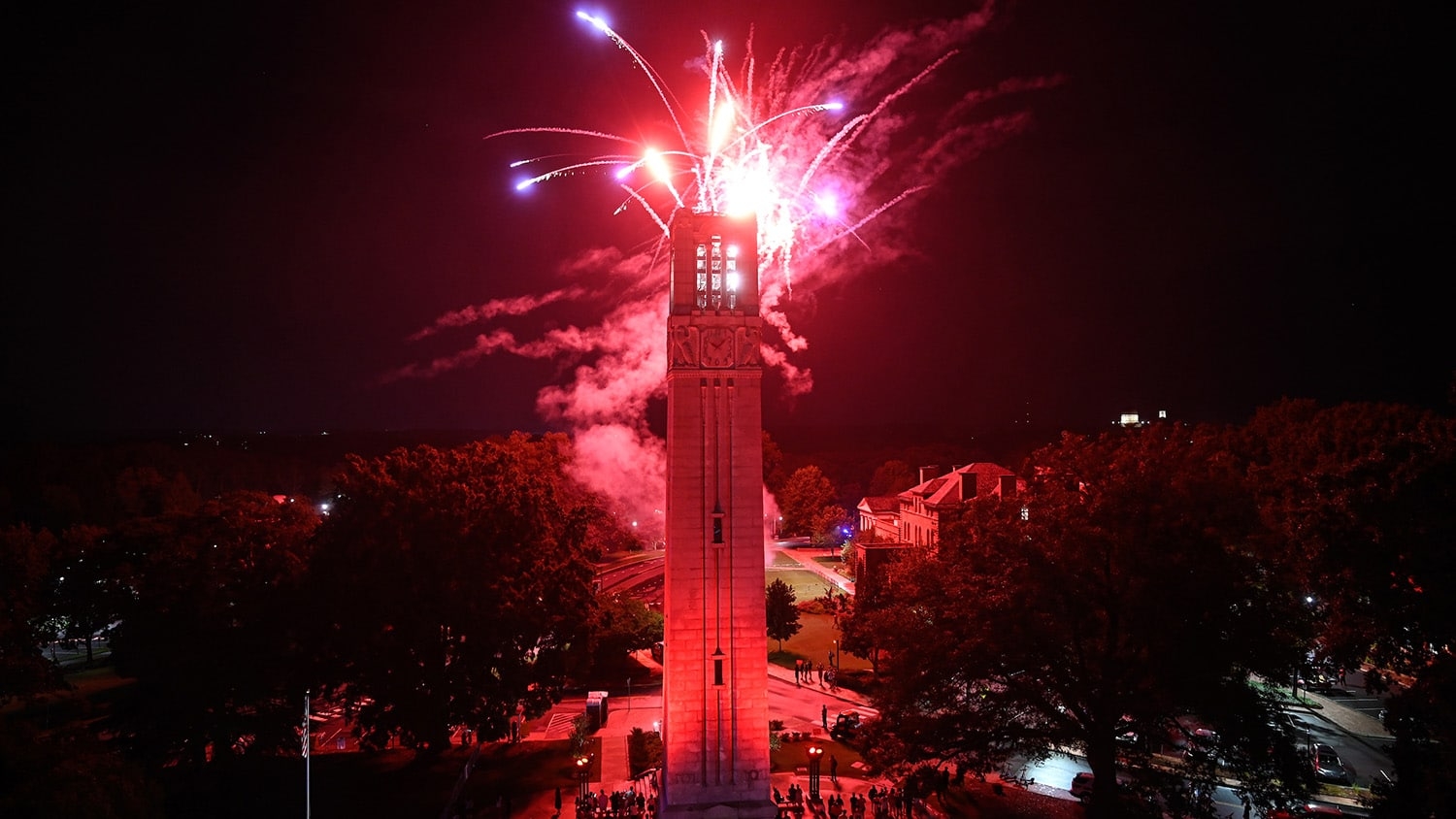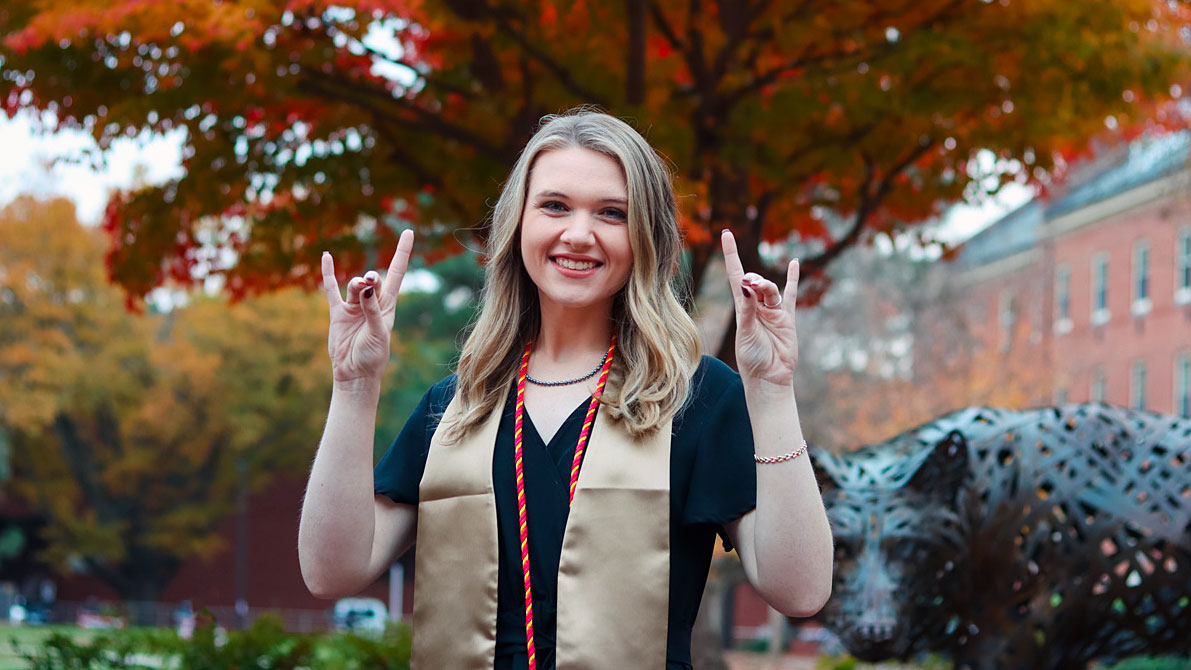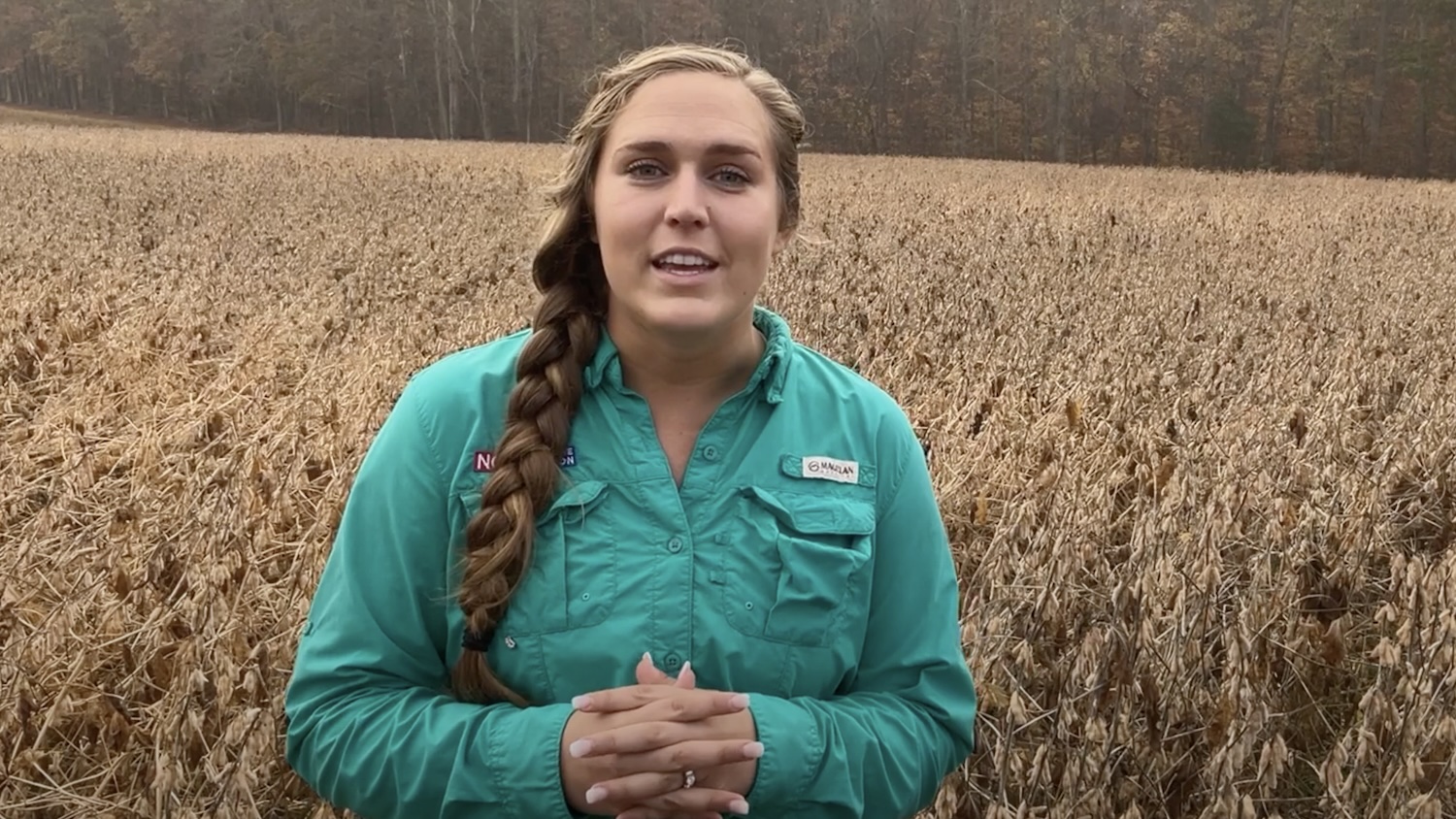Ghostly blooms: Alum honored for orchid breeding efforts
Keith Davis was teaching horticulture in 1980 at a Corpus Christi, Texas, high school, when a chance encounter at a local estate sale set him on a course of becoming a life-long orchid breeder. Among the items at the estate sale were a variety of orchids priced at $1 each.
“I saw these orchids, and I didn’t really know much about them,” said Davis, a 1979 College of Agriculture and Life Sciences graduate in forestry and horticultural science. With a new greenhouse to fill at his high school, he purchased a dozen orchids growing on a variety of strange materials.
Davis repotted his new plants in dark, rich soil. “I was sure that any plant in such luxurious soil would explode in new growth and shower me with blooms,” Davis wrote in Orchids magazine. “In just a few short weeks, all but one of the 12 plants had gone to compost heaven.”
The experience piqued Davis’ interest in orchids, and he became involved with the local orchid society. Over the years, his knowledge and skill at breeding orchids grew. He was recently honored by the American Orchid Society for his efforts to breed the rare and endangered ghost orchid, native to south Florida.

In October, Davis brought samples of the ghost orchid to N.C. State University for a seminar in the CALS Horticultural Science Department. The orchid’s ghostly blooms had ceased for the season, but the plant had produced a valued seed pod that would soon be en route to a colleague eager to try his hand at cultivating the plant. Davis was invited by Dr. Dennis Werner, Raulston Distinguished Professor of horticulture, who taught Davis as an undergraduate student during Werner’s first year at N.C. State.
“Keith has solved the riddle of growing this unique and special plant in domestication. His accomplishment is a reflection of his passion for orchids and horticulture, his creativity, inquisitiveness and excellent observational skills,” said Werner. “His work will have far-reaching impacts in developing future strategies to prevent extinction of this beautiful and remarkable species.”
Davis first heard of the ghost orchid, an almost legendary plant, while he was just beginning to study orchids. He had never seen as much as a photo of the orchid’s bloom – only a painting.
“It’s so gorgeous, especially when you have more than one bloom, and it blooms all summer,” Davis said.
Several years later, while visiting greenhouses at UNC-Charlotte, Davis saw an orchid that looked very similar to the one in the painting. The greenhouse curator later told him that the horticulture staff had tried many times to cultivate the orchid, but only the one specimen had survived long enough to bloom one time, then died the next year.
Davis later described the bloom as, “a cross between an albino frog and a ghost with bowed legs, two sets of wings, a green head with two red eyes and a long arching tail. What in the world was Nature thinking when this thing was designed?”
Thus began Davis’ quest to cultivate the ghost orchid. At the time, he had moved to Reidsville to be closer to his wife’s family and was working as the horticulture director for Chinqua-Penn Plantation, the opulent home of Jeff and Betsy Penn. The Penns, who collected artifacts, art and horticultural specimens from around the world, donated their home, collection and gardens to the UNC system to be used for education, agricultural research and as a museum.
Chinqua-Penn was initially managed by UNC-Greensboro in 1965, and N.C. State University assumed the role of caretaker in 1986. When Davis worked there, the director of Chinqua-Penn Plantation also had an extensive orchid collection, and the combined orchid collections were used to decorate throughout the home.
Davis studied the ghost orchid to learn how it grows in nature. In the Fakahatchee Strand Preserve State Park in south Florida, the orchid grows on trees. “I had to get it to grow on something that wouldn’t rot,” Davis said. “In nature, this leafless orchid grows on a living plant such as on the trunk or limbs of trees.”
While splitting firewood for his home, Davis noticed that the bark of mockernut hickory (Carya tomentosa) came off a log nearly intact, even after a year of aging. The mockernut hickory bark looked right for growing orchids, but Davis wondered how long it would last.
After experimenting and failing with over a dozen different materials to try and grow the ghost orchid on, he planted a baby, seed-raised ghost orchid on the mockernut hickory bark. The orchid took root and began to grow.
Davis believes the bark holds some type of preservative properties – the first orchid he successfully grew nearly 20 years ago is still holding fast to the original piece of bark. Some species of trees have bark containing chemicals that can actually kill plants that try to grow on it. However, the mockernut bark appears to have no destructive properties, only long-term preservative qualities that keep it from rotting.
The next challenge was getting the orchid to bloom. When one of Davis’ ghost orchids reached blooming size without producing blooms, Davis again turned to nature to determine what might promote blooms. A fellow orchid grower and native south Floridian told Davis that in nature the ghost orchids live in an area that is typically dry in winter. Orchid enthusiasts had observed that wet winters produced fewer ghost orchid blooms.
So Davis moved his ghost orchid to a drier area of the greenhouse and watered it sparingly through the winter. By the end of February 2007, he was rewarded with the orchid’s first ghostly blooms.
In May 2007, Davis entered his prized ghost orchid in the American Orchid Society judging in Greensboro, packing the fragile plant for its 40-mile journey to the show. To his surprise, the AOS presented him with the highest possible award for flower quality — “like winning the Kentucky Derby of orchids,” Davis said.
Davis’ quest to grow the ghost orchid came out of his desire to preserve this endangered plant. There are only a few dozen plants growing in the wild, and many can only be seen on risky treks through waist-deep waters, home to poisonous snakes and alligators. The orchid was also known to grow in Cuba many years ago, but limited access to Cuba has left orchid enthusiasts wondering.
“I was trying to preserve it,” Davis said. “I wanted to learn how to keep it alive so orchid growers could raise it and grow it.” Being able to artificially reproduce endangered species greatly reduces the illegal collection of wild plants from nature.
Today, Davis raises orchids at his home near Reidsville, conducting sales over the Internet. The ghost orchid is mainly a hobby for him now. After 20 years’ effort, he feels satisfaction in finding a way to keep this ghostly orchid alive for others to enjoy.
— Natalie Hampton
- Categories:



In July 2007, the first ghost orchid plant to bloom in Blair Audubon Corkscrew Swamp Sanctuary at the edge of the Everglades appeared high in the cypress canopy just off the boardwalk. Perhaps hurricanes cleared the way to see the plant, best with a scope. By the end of the July to September blooming, 20 magnificent blooms had thrilled visitors from across the globe. July 10 was my birthday, and I was mesmerized by its rare, endangered and unique beauty status. So much so that I visited the bloomings every day for three months, two years in a row. I am still obsessed. Ghost Orchid, a mystery novel by D. K. Christi, tied to this experience examines the aura of this singular plant and the importance of preserving natural habitat. NPR Reviews praised Ghost Orchid for the beauty of the everglades that shines through on every page, the ghost orchid the heart and soul of the story, a must read. Keith Davis was kind to give permission to post his domestic grown ghost orchid photographs on my http://www.dkchristi.com web site where many of my fans have enjoyed his expertise at accomplishing the near impossible, domestic grown ghost orchids. Their gossamer beauty and mystical legends may continue with his talent – but most importantly – those who share a special connection that is difficult to describe – when the ghost orchid captures its fan and won’t let go – will continue enjoying is mystery and magic. I present “Sex, Myths and Magic – The Ghost Orchid” to organizations and conferences, the story of this magical member of the orchid species, in the wild and domestic, in legend and in science, since it worked its magic and continues to fascinate me. Corkscrew Swamp is not as inhospitable as Fakahatchee strand; it has a delightful boardwalk with the convenience of accessibility and yet the power of the primeval swamp.